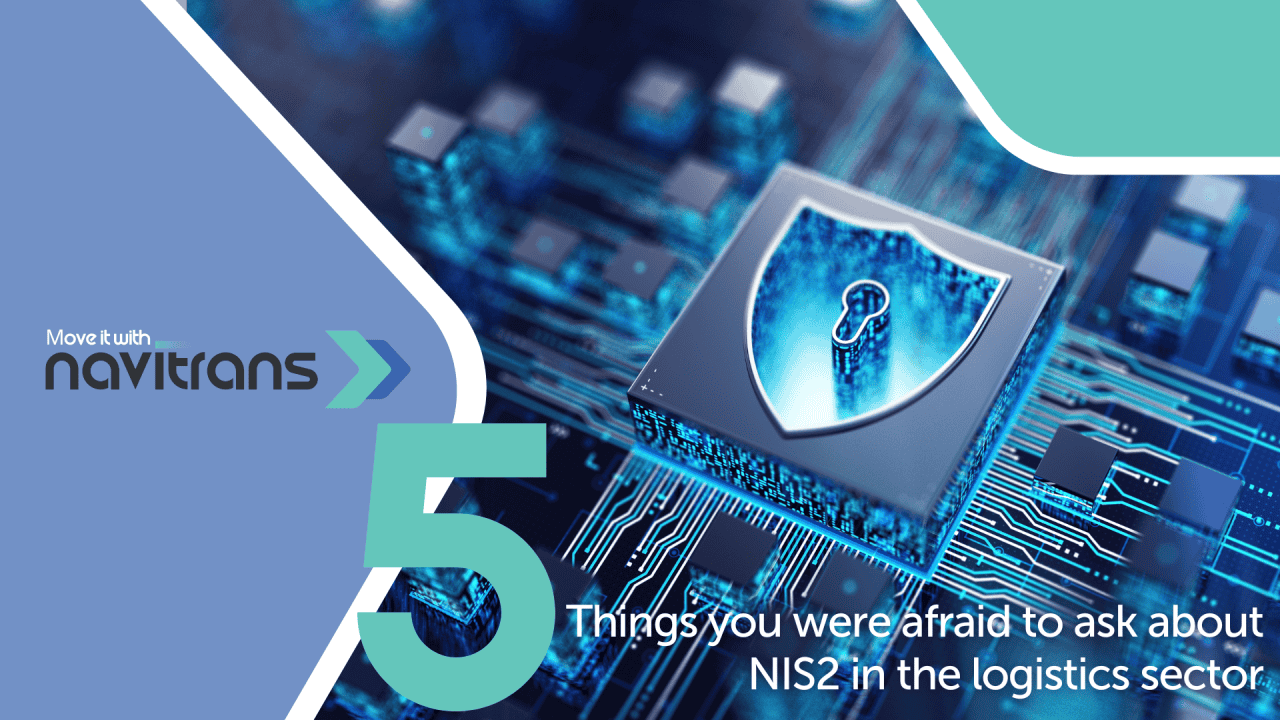NIS2, a term you will have heard many a time in the last couple of months and one that will have an impact on the logistics sector. But lets go beyond the buzz and break it down in a couple of simple questions with clear cut answers.
NIS2… What Was It Again?
To boil down NIS2 in a nutshell: It is an enhanced European regulatory framework designed to increase the cybersecurity resilience of essential and important companies and organizations across the EU. Its goal is to create a more secure and unified digital landscape in Europe. The new NIS2 regulation now also covers additional industrial sectors, including “supply chains” and “logistics.”
More Legislation? Why?
In our increasingly digital world, the threat of cybercrime extends far beyond the occasional phishing email asking you to donate money to a Nigerian prince. We now face the threat of disruptions to primary business processes across all sectors and industries, which can have a significant impact on both your company and the economy and society in general.
What Is the Impact on the Logistics Sector?
NIS2 specifically focuses on supply chains and logistics companies because disruptions to their digital systems can have far-reaching consequences in our modern society. It aims to elevate cybersecurity standards across the sector by harmonizing oversight and enhancing security practices. Companies in this sector must evaluate and control cybersecurity threats from external suppliers and vendors (critical safety components, IT service providers) to ensure system security and resilience against cyberattacks.
Where Are the Biggest Risks?
A cyberattack is never a question of if, it’s a question of when. A few key vectors for the disruption of your business are:
• Ransomware Attacks: Easy to execute via phishing links or malware, ransomware locks down critical data on servers and workstations, paralyzing your day-to-day operations.
• Supply Chain Disruptions: Your company is not an island but a link in the chain between different partners and suppliers. A cyberattack on their systems might have massive implications for other parties in the chain.
• Connected Devices: With more and more elements of our company becoming “smart devices,” new attack vectors open up to compromise your digital infrastructure.
• Tight Budgets: With narrow margins, the budget for cybersecurity is limited, increasing the risk that your knowledge and infrastructure ‘falls behind’.
• Your Employees: The lack of cybersecurity awareness among them can quickly turn a click on a phishing link into a full-blown cybersecurity disaster.
So What Can You Do?
Cybersecurity is not an activity; it’s a mindset. Putting your digital safety first should be integrated into both business strategy and day-to-day operations. Here are a few pointers:
• Read Up on NIS2: Knowing the guidelines and regulations will give you a clear view of any cybersecurity gaps you might need to close to comply with regulations. Learn more about NIS2
• Be Mindful of Your Infrastructure: A massive backlog of updates on the OS, unsupported hardware, or older applications might increase the risk of a cyberattack.
• Train Your Workforce: Awareness plays a key role in preventing end-user side attacks that disrupt your business.
What If We Don’t Do Anything?
As with the GDPR, NIS2 introduces clear ground rules and substantial fines for non-compliance (up to €10 million or 2% of global annual revenue), including measures to hold top management personally liable for gross negligence in cybersecurity.
Ensuring compliance with NIS2 is crucial not only to avoid hefty penalties but also to protect your organisation and contribute to a more secure and resilient digital ecosystem in Europe.
Closing:
So being “Cyber Secure” is not only a question of adhering to European guidelines but more importantly: Guarding your business continuity. The suggested fines and penalties might sound high but are nothing compared to the loss of business (and reputation) that can result from an online attack.









